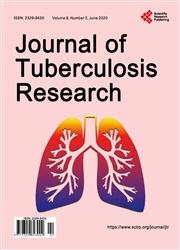健康教育视频在提高结核病患者治疗依从性方面的有效性:来自印度班加罗尔的一项干预研究
引用次数: 2
摘要
背景:不坚持结核病治疗可能会延长疾病传播,也会增加耐药性的风险。已经进行了各种研究来确定不依从性的预测因素,但很少有基于干预的研究来解决治疗依从性问题。本研究旨在评估在结核病干预单元(TU)中提供以患者为中心的健康教育视频后的治疗依从性,并将治疗依从性与对照TU中的治疗依从率进行比较。方法:在2017年11月至2018年1月的三个月内,在班加罗尔市区的两个TU对所有接受日常方案治疗的新诊断结核病病例进行干预研究。治疗支持者制作了一个以患者为中心的健康教育视频,并向所有同意参与干预TU的合格参与者播放。该视频在强化阶段治疗开始时播放一次,在治疗的继续阶段播放一次。共有100名患者组成了研究样本,其中21名来自干预TU,79名来自对照TU。从他们的治疗卡中获取患者详细信息。还记录了每位患者每月错过剂量的数据。将数据输入到Microsoft excel工作表中,并使用社会科学统计软件包进行分析。数据以频率和百分比表示。采用卡方检验对各组进行比较。结果:大多数研究参与者的年龄在25-44岁之间。病例在男性和女性中的分布是平等的。干预TU的肺结核病例数明显较高。在干预和比较TU中,强化期结束时的治疗依从性分别为90.5%和84.8%,持续期结束时分别为85%和71.4%,这一差异无统计学意义。结论:使用基于移动视频的健康教育显示出更好的治疗率,并被发现可以提高结核病治疗的依从性。本文章由计算机程序翻译,如有差异,请以英文原文为准。
Effectiveness of Health Education Video in Improving Treatment Adherence among Patients with Tuberculosis: An Interventional Study from Bengaluru, India
Background: Non-adherence to tuberculosis (TB) treatment might prolong disease transmission and also increases the risk of drug resistance. Various studies have been carried out to determine the predictors of non-adherence but intervention-based studies to address treatment adherence are scarce. This study intends to estimate the treatment adherence rates following delivery of patient-centered health education videos in the intervention tuberculosis unit (TU) and to compare the treatment adherence with that in the comparison TU. Methods: An interventional study was conducted in two TUs of Bengaluru urban district among all newly diagnosed TB cases on daily regimen treatment over a period of three months from November 2017 to January 2018. A patient centered health education video was developed and shown by the treatment supporters to all eligible participants consenting to participate in the intervention TU. The video was shown once at the beginning of intensive phase treatment and once in the continuation phase of treatment. A total of 100 patients, 21 from intervention TU and 79 from comparison TU formed the study sample. Patient details were obtained from their treatment cards. Data on missed doses per month per patient were also noted. Data were entered into Microsoft excel worksheet and analyzed using statistical package for social sciences. Data are expressed as frequency and percentages. Chi-square test was applied to compare groups. Results: The majority of the study participants were aged between 25 - 44 years. Equal distribution of cases was seen among males and females. Intervention TU had significantly higher number of pulmonary TB cases. Treatment adherence rates were 90.5% and 84.8% at end of intensive phase and 85% and 71.4% at end of continuation phase in the intervention and comparison TU respectively, and this difference was not statistically significant. Conclusion: Use of mobile video-based health education showed better treatment rates and was found to improve TB treatment adherence.
求助全文
通过发布文献求助,成功后即可免费获取论文全文。
去求助

 求助内容:
求助内容: 应助结果提醒方式:
应助结果提醒方式:


